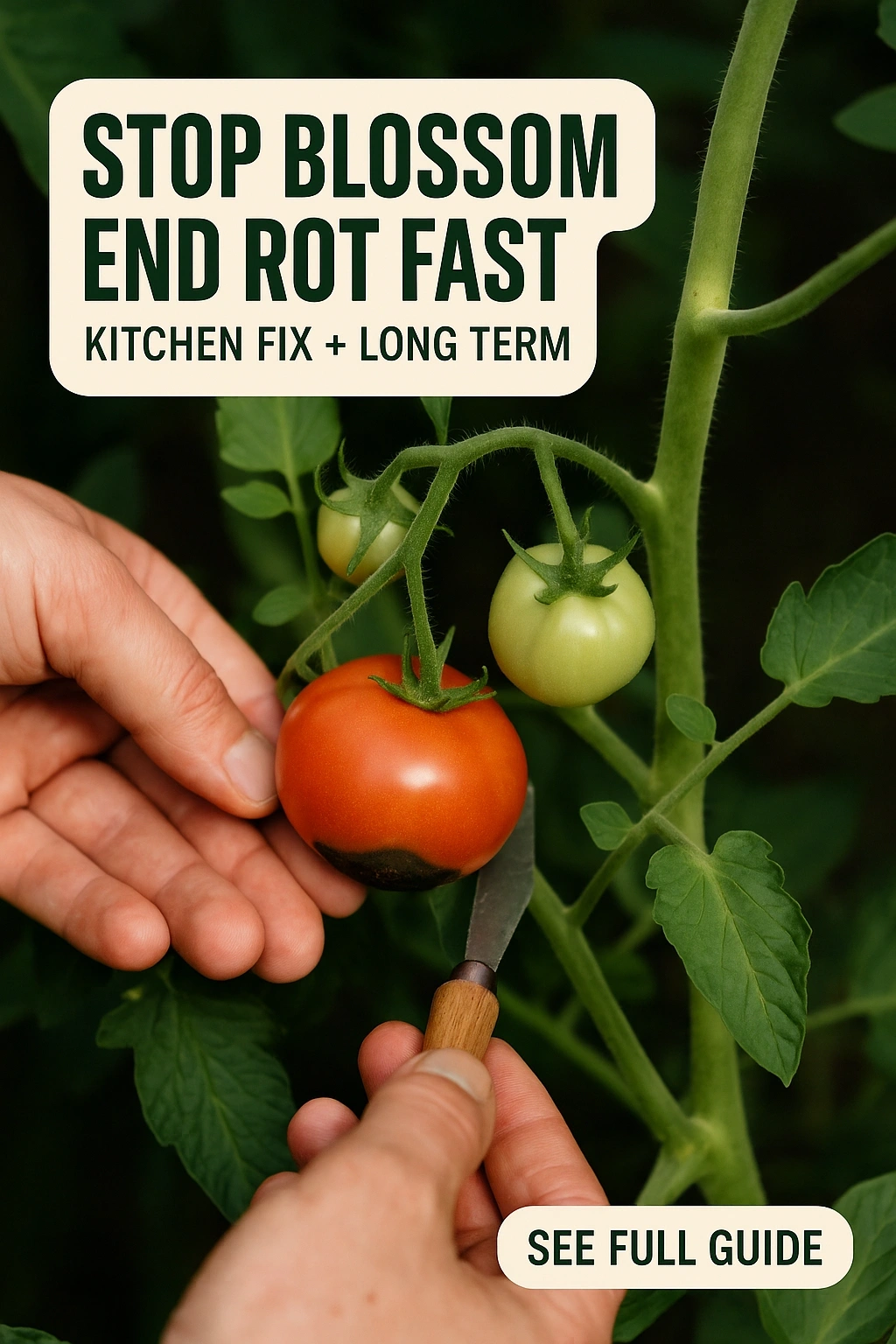
Blossom end rot is a common yet frustrating problem that many gardeners face, particularly with tomatoes and peppers. This condition manifests as dark, sunken spots on the blossom end of the fruit, rendering it unsightly and unappetizing. If you’ve encountered this issue, you’re not alone. In this article, we will explore effective kitchen fixes for immediate relief and long-term solutions to prevent blossom end rot from recurring in your garden.
What is Blossom End Rot?
Blossom end rot occurs when the fruit does not receive enough calcium during its development. This deficiency can be caused by various factors, including inconsistent watering, poor soil conditions, and rapid growth rates. Understanding the underlying causes is essential to address the problem effectively.
Immediate Kitchen Fixes for Blossom End Rot
When you notice the first signs of blossom end rot, quick action can salvage your plants and fruits. Here are some kitchen fixes that can provide immediate relief.
Using Calcium-Rich Solutions
- Eggshells: Save your eggshells and dry them out. Crush them into a fine powder and sprinkle them around the base of your plants. This adds calcium to the soil and helps mitigate blossom end rot.
- Milk: Mix one part milk with three parts water and apply it to the soil. The calcium in milk can help alleviate the deficiency.
- Vinegar and Water: A mixture of vinegar and water can help provide a quick calcium boost. Use a tablespoon of vinegar in a gallon of water to water your plants.
Watering Techniques
Inconsistent watering can exacerbate blossom end rot. Ensure that you provide a steady supply of moisture to your plants. Water deeply but less frequently, allowing the soil to dry slightly between watering sessions. This practice encourages deep root growth and improves nutrient absorption.
Long-Term Solutions to Prevent Blossom End Rot
While immediate fixes can help, establishing long-term practices will be crucial for preventing blossom end rot from returning. Here are several strategies to consider.
Soil Management and Nutrient Balance
- Soil Testing: Conduct a soil test to determine its pH and nutrient levels. This information will guide you in amending the soil appropriately.
- Organic Matter: Incorporate organic matter, such as compost, into your soil. This improves soil structure, promotes better drainage, and enhances nutrient retention.
- Calcium Amendments: Use lime or gypsum as soil amendments to increase calcium levels. Follow the recommendations based on your soil test results for effective application.
Consistent Watering Practices
Establishing a regular watering schedule is vital. Monitor weather conditions and adjust your watering routine accordingly. Consider using mulch around your plants to retain moisture and regulate soil temperature.
Choosing the Right Varieties
Some plant varieties are more susceptible to blossom end rot than others. When selecting seeds or seedlings, choose varieties known for their resilience against this issue. Consult local gardening experts or resources to identify the best options for your area.
Implementing Crop Rotation
Practicing crop rotation can help maintain soil health and reduce the risk of blossom end rot. By rotating your crops each season, you minimize nutrient depletion and interrupt the life cycles of pests and diseases that may affect your plants.
Monitoring Plant Health Regularly
Regular monitoring of your plants is essential for early detection of issues. Inspect leaves, stems, and fruits for signs of distress, and promptly address any problems before they escalate. A proactive approach can save your harvest.
Utilizing Companion Planting
Companion planting can improve overall plant health and reduce the risk of blossom end rot. Certain plants, such as basil or marigolds, can enhance nutrient uptake and deter pests, contributing to a healthier growing environment.
FAQs
What are the signs of blossom end rot?
The primary sign of blossom end rot is a dark, sunken spot at the bottom of the fruit. This area may also appear water-soaked or leathery, indicating that the fruit is not developing properly.
Can blossom end rot be fixed once it appears?
While affected fruits cannot be salvaged, implementing immediate fixes, such as calcium supplements and improved watering practices, can help prevent further occurrences in future fruits.
Is blossom end rot common in all vegetables?
Blossom end rot is most common in tomatoes, peppers, and eggplants. However, other fruits and vegetables can also be affected if they experience calcium deficiency during development.
How can I improve calcium levels in my garden?
Improving calcium levels can be achieved through soil amendments like lime and gypsum, incorporating crushed eggshells, and ensuring a balanced watering routine to promote better nutrient absorption.
Does blossom end rot affect the entire plant?
No, blossom end rot specifically affects the fruit’s blossom end. However, if the underlying issues are not addressed, it can lead to overall plant stress, impacting growth and yield.
Can I prevent blossom end rot with fertilizers?
Using a balanced fertilizer that includes calcium can help prevent blossom end rot. However, it is essential to ensure that your watering practices are consistent to allow for proper nutrient uptake.
